Sunifiram
- CAS NO.:314728-85-3
- Empirical Formula: C14H18N2O2
- Molecular Weight: 246.3
- MDL number: MFCD04112755
- EINECS: 1312995-182-4
- SAFETY DATA SHEET (SDS)
- Update Date: 2024-11-19 20:33:22
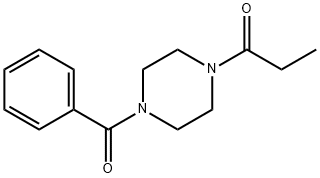
What is Sunifiram?
Description
Sunifiram (DM-235) is a synthetic derivative of piracetam, although due to breaking the pyrrolidone backbone it is no longer in the racetam class of drugs (yet by being derived from them, it is still commonly associated with this class).
Sunifiram has mechanisms similar to nefiracetam in the hippocampus, and similar to that drug sunifiram shows anti-amnesiac properties and is potentially a cognitive enhancer. Its anti-amnesiac activity is several orders of magnitude greater than piracetam on a per weight basis, and preliminary evidence suggest it has a similarly low toxicity profile.
The Uses of Sunifiram
Sunifiram is a potent nootropic agent.
What are the applications of Application
DM 235 is a strong nootropic agent
Synthesis Reference(s)
Design, synthesis and nootropic activity of new analogues of sunifiram and sapunifiram, two potent cognition-enhancers.
DOI: 10.1016/j.bmc.2009.08.055
Novel Sunifiram-carbamate hybrids as potential dual acetylcholinesterase inhibitor and NMDAR co-agonist: simulation-guided analogue design and pharmacological screening
DOI: 10.1080/14756366.2022.2068147
Side Effects
While initial research suggests that sunifiram is virtually non-toxic and doesn’t produce any notable side effects, it’s important to note how little research has been conducted on this compound. For this reason, it’s incredibly important that you begin with a low dosage before ramping up to a higher one, and pay close attention to any noted side effects you experience.
Based on anecdotal evidence, some sunifiram users have experienced side effects such as:
Headache
Hot flashes
Difficulty sleeping
Manic feelings
These side effects seem only to be mentioned with dosages outside of the 5-10mg range, with higher doses producing more pronounced side effects. If you find that you’re experiencing side effects as you up your dosage, ramp down your dosage to a level where no side effects are present.
Mode of action
Sunifiram enhances NMDA-dependent signaling by increasing PKCα phosphorylation, at a dosage range of 10-100nM. This mechanism of action is dependent on the availability of the glycine binding site and Sunifiram has been shown to act as an antagonist to glycine at a concentration of 300μM.
Furthermore, the increased activity of AMPA receptor activation has been associated with increased CAMKII and PKCα phosphorylation. Although studies have confirmed that intracellular proteins like CAMKII and PKCα are activated after Sunifiram administration, other proteins like CaMKIV and ERK remain unaffected.
A brief summary of the mechanism of action, as it is currently understood, is that Sunifiram acts on the NMDA receptor’s glycine binding site, which results in increased signaling and activation of CAMKII and PKCα proteins and the subsequent positive regulation of AMPA receptors.
Furthermore, animal studies have indicated that a dosage of 0.01mg/kg increases acetylcholine release by up to 200% within one hour of injection, in rat prefrontal cortex. This effect is not seen at a higher dosage of 1mg/kg.
References
[1] Agha, Khalid A. et al. "Novel Sunifiram-carbamate hybrids as potential dual acetylcholinesterase inhibitor and NMDAR co-agonist: simulation-guided analogue design and pharmacological screening." Journal of Enzyme Inhibition and Medicinal Chemistry 37 (2022): 1241–1256. DOI: 10.1080/14756366.2022.2068147
[2] Moriguchi, Shigeki et al. "Novel nootropic drug sunifiram enhances hippocampal synaptic efficacy via glycine‐binding site of N‐methyl‐D‐aspartate receptor." Hippocampus 23 (2013). DOI: 10.1002/hipo.22150
Properties of Sunifiram
| Melting point: | 92 - 94°C |
| Boiling point: | 442.0±38.0 °C(Predicted) |
| Density | 1.154±0.06 g/cm3 (20 ºC 760 Torr) |
| storage temp. | 2-8°C |
| solubility | H2O: soluble24mg/mL |
| pka | 0.08±0.70(Predicted) |
| form | solid |
| color | white |
Safety information for Sunifiram
Computed Descriptors for Sunifiram
New Products
4-AMINO-TETRAHYDRO-PYRAN-4-CARBOXYLIC ACID HCL 4-(Dimethylamino)tetrahydro-2H-pyran-4-carbonitrile 4-AMINO-TETRAHYDRO-PYRAN-4-CARBOXYLIC ACID 4-Aminotetrahydropyran-4-carbonitrile Hydrochloride (R)-3-Aminobutanenitrile Hydrochloride 5-Bromo-2-nitropyridine Nimesulide BP Aceclofenac IP/BP/EP Diclofenac Sodium IP/BP/EP/USP Mefenamic Acid IP/BP/EP/USP Ornidazole IP Diclofenac Potassium 3-Bromopyrazole (3aR,4R,5R,6aS)-hexahydro-5-Triethyl silyloxy-4-((E)-3-oxo-5-phenylpent-1- enyl)cyclopenta[b]furan-2-one. 1-Chlorocarbonyl-4-piperidinopiperidine 1-Bromo-4-phenyl-2-Butanone 4-Amino-2-fluoro-N-methylbenzamide 1,1'-Carbonyldiimidazole SODIUM AAS SOLUTION ZINC AAS SOLUTION BUFFER SOLUTION PH 10.0(BORATE) GOOCH CRUCIBLE SINTERED AQUANIL 5 BERYLLIUM AAS SOLUTIONRelated products of tetrahydrofuran

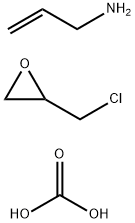
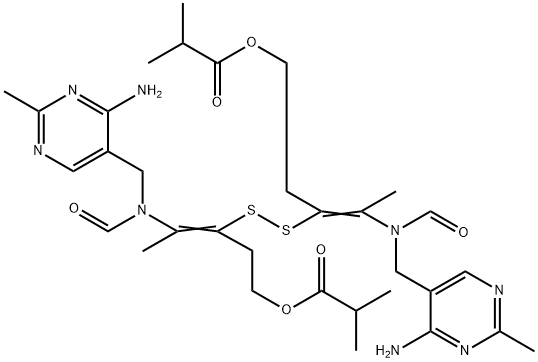


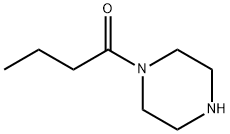
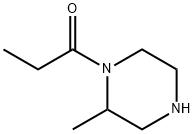
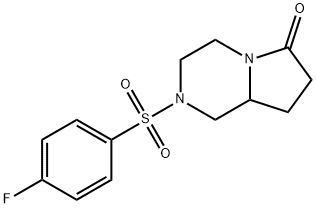
You may like
-
 Sunifiram 98% (HPLC) CAS 314728-85-3View Details
Sunifiram 98% (HPLC) CAS 314728-85-3View Details
314728-85-3 -
![Dimethyl [2-oxo-3-[3-(trifluoromethyl)phenoxy]propyl]phosphonate 99%](https://img.chemicalbook.in//Content/image/CP5.jpg) Dimethyl [2-oxo-3-[3-(trifluoromethyl)phenoxy]propyl]phosphonate 99%View Details
Dimethyl [2-oxo-3-[3-(trifluoromethyl)phenoxy]propyl]phosphonate 99%View Details
54094-19-8 -
 85-81-4 99%View Details
85-81-4 99%View Details
85-81-4 -
![208111-98-2 (3aR,4R,5R,6aS)-5-(Benzoyloxy)hexahydro-4-[(1E)-3-oxo-4-[3-(trifluoromethyl)phenoxy]-1-buten- 1-yl]-2H-cyclopenta[b]furan-2-one 99%](https://img.chemicalbook.in//Content/image/CP5.jpg) 208111-98-2 (3aR,4R,5R,6aS)-5-(Benzoyloxy)hexahydro-4-[(1E)-3-oxo-4-[3-(trifluoromethyl)phenoxy]-1-buten- 1-yl]-2H-cyclopenta[b]furan-2-one 99%View Details
208111-98-2 (3aR,4R,5R,6aS)-5-(Benzoyloxy)hexahydro-4-[(1E)-3-oxo-4-[3-(trifluoromethyl)phenoxy]-1-buten- 1-yl]-2H-cyclopenta[b]furan-2-one 99%View Details
208111-98-2 -
 2033-24-1 99%View Details
2033-24-1 99%View Details
2033-24-1 -
 Meldrums acid 2033-24-1 99%View Details
Meldrums acid 2033-24-1 99%View Details
2033-24-1 -
 Cyaclopentane carboxylic acid 99%View Details
Cyaclopentane carboxylic acid 99%View Details
3400-45-1 -
 2-Aminopyridine 504-29-0 99%View Details
2-Aminopyridine 504-29-0 99%View Details
504-29-0